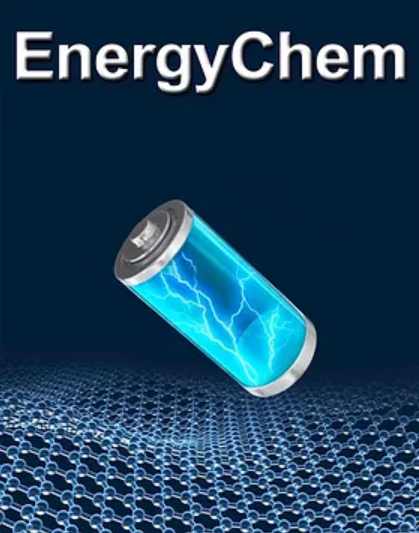锂电池用受控自由基聚合衍生固态聚合物电解质
IF 23.8
Q1 CHEMISTRY, MULTIDISCIPLINARY
引用次数: 0
摘要
固态聚合物电解质(spe)已经成为解决传统液体电解质面临的挑战的一个有希望的候选者,包括安全风险和有限的能量密度锂电池。尽管有这些优点,聚合物电解质仍然需要进一步优化来构建高性能的储能系统。可控自由基聚合(CRP)技术,包括可逆加成-碎片转移(RAFT)、原子转移自由基聚合(ATRP)和氮氧化物介导聚合(NMP),能够精确控制聚合物的结构、分子量和功能,在调节聚合物电解质的离子电导率、循环稳定性、机械性能和界面相容性方面发挥重要作用。本文在讨论CRP反应机理和典型拓扑结构的基础上,深入探讨了CRP对电化学性能的影响,重点介绍了利用CRP合成不同拓扑结构聚合物电解质的研究进展。最后提出了潜在的挑战和观点,这篇综述可以加深对CRP方法在构建聚合物电解质方面的理解,并为塑造高性能的CRP衍生聚合物电解质提供科学指导。本文章由计算机程序翻译,如有差异,请以英文原文为准。
Controlled radical polymerization-derived solid-state polymer electrolytes for lithium batteries
Solid-state polymer electrolytes (SPEs) have emerged as a promising candidate to work out remaining challenges faced by conventional liquid electrolytes, including the safety risks and limited energy density lithium batteries. Despite these benefits, polymer electrolytes are still required further optimization for constructing high-performance energy storage systems. Controlled radical polymerization (CRP) techniques, encompassing reversible addition-fragmentation transfer (RAFT), atom transfer radical polymerization (ATRP), and nitroxide-mediated polymerization (NMP), enable precise control over polymer architectures, molecular weights, and functionalities, which plays an essential role in regulating the ionic conductivity, cycling stability, mechanical performance, and interfacial compatibility of polymer electrolytes. Here, on the basis of discussing the CRP reaction mechanisms and the typical topological structures, this review thoroughly delves into the effects of CRP on electrochemical performance, and particularly focuses the current development of polymer electrolytes with different topological structures synthesized via CRP. Ending with providing the underlying challenges and perspectives, this review allows to deepen the comprehension of CRP methodologies on constructing polymer electrolytes, and offers the scientific guidance for shaping the high-performance CRP-derived polymer electrolytes.
求助全文
通过发布文献求助,成功后即可免费获取论文全文。
去求助
来源期刊

EnergyChem
Multiple-
CiteScore
40.80
自引率
2.80%
发文量
23
审稿时长
40 days
期刊介绍:
EnergyChem, a reputable journal, focuses on publishing high-quality research and review articles within the realm of chemistry, chemical engineering, and materials science with a specific emphasis on energy applications. The priority areas covered by the journal include:Solar energy,Energy harvesting devices,Fuel cells,Hydrogen energy,Bioenergy and biofuels,Batteries,Supercapacitors,Electrocatalysis and photocatalysis,Energy storage and energy conversion,Carbon capture and storage
 求助内容:
求助内容: 应助结果提醒方式:
应助结果提醒方式:


